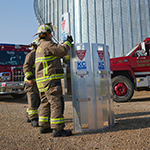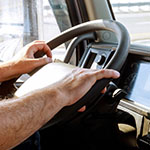Motor vehicle records are critical for maintaining a strong safety culture
It is imperative to ensure that drivers are legally qualified to operate the type of vehicles your company utilizes. That’s why it’s important to obtain a copy of their motor vehicle record (MVR) during both the hiring process and throughout the time an employee drives on behalf of your company. If a driver’s license is suspended or their record doesn’t meet your standards, you may have an unqualified driver operating your vehicle without you being aware.
Know who you are hiring
MVRs provide an individual’s recent and historical driving record, compiled, and administered by a state’s department of motor vehicles (DMV). It features documented incidents and specific violations that have occurred over a certain period. The information typically includes some of the following:
- Height
- Weight
- Date of birth
- License number
- Any endorsements such as tanker or hazardous materials (HazMat)
- Violations such as suspension, speeding, following too close
MVRs do vary by state and differ in their layout and the information provided because there is no national standard for information or format.
Understanding when to request an MVR
Under Federal Motor Carrier Safety Administration (FMCSA) regulations1, employers are required to request a pre-hire MVR in all states where a commercial driver’s license (CDL) was held within the previous 3-year period.
Employers are also required to review a driver’s MVR every 12 months to remain compliant under federal law.
Also, employers must run a MVR within 15 days after a CDL driver obtains a new medical examiner certificate to ensure their medical certification status has been updated on the Commercial Driver’s License Information System (CDLIS).
Continuous monitoring reduces risk and losses
Monitoring is essential so that employers stay informed about their drivers’ records in real time. Consider if a driver is caught driving under the influence while operating their personal vehicle, does this disqualify them from operating your vehicle? Without continuous monitoring you may not know about the citation until you run the next annual MVR, which could be 12 months after the fact.
While annual MVR checks are necessary for compliance, they leave gaps. Continuous monitoring helps identify high-risk drivers promptly, preventing accidents and protecting the company from having a driver that is unsafe or disqualified from operating any of your vehicles.
Motor vehicle crashes cost employers over $72.2 billion annually.2 Continuous monitoring provides owners with the information to take preventive measures, potentially reducing accidents, and lowering risk.
Regular MVR checks encourage better driver behavior, leading to safer operations and compliance with regulations. They can be used to provide coaching for drivers if they receive a citation. By utilizing with your fleet policies, drivers know that they are being monitored and the consequences they face with too many points on their license.
Partners for your success
Nationwide customers receive preferred pricing on SambaSafety's cost-effective driver monitoring solutions that provide ongoing updates to state MVRs, ensuring that drivers are qualified and safe.
Customers and fleet managers receive automated alerts related to violations, crashes, inspections, citations, and DOT-reportable incidents.
Since 1998, SambaSafety has been a leader in driver risk management software, contributing to safer communities through data insights.
References
[1]. General requirements for driver qualification files (MVR) CFR 391.51, Federal Motor Carrier Safety Administration (FMCSA).
[2]. Cost of motor vehicle crashes to employers, Network of Employers for Traffic Safety.

 >
>

 >
>
 >
>